TABLE OF CONTENTS
Here is the ultimate guide on marijuana bud trimmer job description, qualification, and pay. If you have been hunting for a job in the lucrative marijuana industry this guide should keep you at the edge of your seat.
Soon enough you will discover that you are probably closer to the end of your search than you thought. Most probably you are already qualified for this job and your potential employer is just waiting for you to send in your updated cannabis resume.
Let’s dive in.
Overview of Marijuana Trimmer
The legal cannabis market in the US employs almost quarter a million people on a full-time basis.
Before marijuana, in whatever form, reaches the dispensary shelf it passes through various hands. Bud trimmers show up in the early part of the process. Their work is essential as it guarantees the quality of the finished marijuana product.
Bud trimmers ensure that the buds that end up in the dispensary jar are oozing with resplendency. Bud trimming is a tedious job, but it is also very rewarding. Here is a breakdown of everything that entails bud trimming in the marijuana industry.
What is a Marijuana Bud Trimmer Job?
Contrary to what may appear obvious, bud trimming goes beyond the sheer act of trimming marijuana buds. If that was your expectation you will be surprised by the broad scope of this job.
Marijuana bud trimmers will be involved with the different processes that are in a growing facility. As much as their basic description is to trim buds, other roles vary depending on the growing facility needs at any given time.
Requirements & Qualifications of a Cannabis Trimmer
Bud trimming is an entry level position in the marijuana industry. The first thing that most employers would ask for is passion for the industry and resilience. This is a relatively new industry and things keep changing. The unpredictability would require persistence to stick through the rough patches and weather the growing pains.
To get a bud trimmer job you will need to be at least 21 years old. You will also be required to pass a criminal record check. Next you will be required to have a state issued ID for the state that you want to work in. Alternatively some employers might accept a valid driver’s license.
Here are other conditions that most employees require:
- Excellent computer and analytical skills
- Familiarity with warehouse procedures
- Productivity
- Must not have been convicted of any felony offense
- Experience working in a complex, fast-paced environment
- Ability to handle confidential and sensitive information
- Ability to operate a weighing scale accurately
- Punctuality
- Good communication skills
- Strong organizational and follow-through skills
- Accountability, and initiative
- Detail oriented
- Ability to stand or sit for long periods
- Team oriented and self-motivated
When it comes to academic qualifications, a high school education or GED is the bare minimum. However, a college level education is preferred. Prior experience in this industry is definitely a plus.
Here’s a tip: If you have not worked in this industry before take some time to familiarize yourself with the lingo used. At least have some basic knowledge on how the industry works, common products, common marijuana strains, plant anatomy, jobs in the industry, as well as the laws and regulations that govern the industry.
Marijuana Bud Trimmer Job Description
The primary job of a marijuana bud trimmer is to trim marijuana buds. But aside from that this role is very extensive. If you skim through different 420 job sites that have this job advertised you will discover that the JD will vary slightly based on the employer.
Here are some of the common roles performed by bud trimmers:
- Trim and de-fan plants
- Weigh and record wet trim weight
- Ensure cleanliness and tidiness of the warehouse
- Package products according to the packaging standards
- Communicate with other staff and customers
- Perform any other assigned duty
Bud trimmer jobs peak in early October to mid-November. This is the time when the buds are ready for harvest.
Tip: Don’t wait until the “rush hour” to start sending in your resume; everyone will be doing this at this time and potential employers are likely to be very busy at this time.
Some of the best states to get bud trimmer jobs include Colorado, Oregon, Florida, and Washington state.
Marijuana bud trimmer jobs also come with liabilities. Marijuana grow operations can easily get raided by DEA agents because marijuana is still illegal at a federal level. You must be conversant with marijuana laws and ensure that you abide by them when working in the marijuana industry.
Bud Trimmer's Average Pay
Bud trimmers can set their own rates, but to do this you will need to be an expert at what you do. Some cannabis trimmers earn more than budtenders, depending on the hours that they put in and their expertise.
In other facilities, bud trimmers are paid according to the weight of the trim that they produce. On average most trimmers can do three to four pounds a day. Trimmers are paid around $200 per pound of trim.
Skimming through different marijuana job sites you will find that the starting rate for bud trimmers is between $15- $25 per hour. This translates to $28,000- $48,000 per year.
Other benefits that may be offered by the employer include:
- Dental Insurance
- Health Insurance
- Life Insurance
- Paid Time Off
- Vision Insurance
What Does a Bud Trimmer Do?
Marijuana bud trimmers harvest marijuana flowers by cutting them from the stalks of the plants. This is an entry level job that creates an opportunity for other jobs in the industry as you work your way up the company ladder.
Bud trimming is an important part of growing cannabis because it makes sure that the finished product looks good and is ready to be used. With bud trimmers, the lower-concentration cannabinoids-containing leaves around the bud (cannabis flower) are cut off.
How Much do Marijuana Bud Trimmers Make?
The average pay for a marijuana bud trimmer is around $20,000 to $25,000 per year.
You can easily find a marijuana bud trimmer job on sites such as on Indeed, Simply hired, LinkedIn, and Craigslist among others. With the information gleaned from this guide on marijuana bud trimmer job description, qualification, and pay it should not be difficult to ace a spot.
How much a trimmer makes depends on how much they can trim. Generally, trimmers get paid by the pound of weed they’ve trimmed. They can finish anywhere between 1 to 3 pounds per day.
Trimmers can earn between $150 to $200 per pound, but usually on the lower end of the daily pay rate. A skilled trimmer can make $25 an hour or more at today’s current rate.
On average, trimming jobs pay between $13 and $20 an hour or more if you’ll be doing more plant management.
Of course, the rate per hour varies based on the cultivation facility and state you are working in.
- In California, trimmers can earn between $16-$20 per hour
- Washington trimmers can earn about $17.75 per hour.
- Colorado trimmers can earn on average $16 per hour
Here, you’ll find the average pay per hour by state:
- Alaska: $15.63
- Arizona: $15.95
- Florida: $18.47
- Illinois: $19.79
- Massachusetts: $17.86
- Maryland: $17.55
- Maine: $18.12
- Michigan: $17.84
- New Jersey: $17.32
- Oregon: $18.46
Common benefits include health insurance, employee discounts, 401(k), paid time off, vision insurance, and dental insurance.
How much do cannabis trimmers get paid for a pound of cannabis trimmed? The answer is around $150 to $300 per trimmed pound.
Where to Find Cannabis Trimmer Jobs
You can find cannabis trimmer jobs in any state with medical or recreational marijuana laws. Marijuana trimmer jobs are usually concentrated in big cities or their surrounding towns.
States with many entry-level employment opportunities in cultivation sites include Colorado, Oregon, Washington, California, Massachusetts, Illinois, and many more states with fast-growing markets.
In terms of popular trimming cities, keep your eye out for trimming job positions in metropolitan locations such as Denver, CO, Los Angeles, CA, Chicago, IL, and Medford, OR.
How to Get Hired as a Bud Trimmer
If you want to get hired as a marijuana trimmer, you’ll have to be at least 21 years old to work with a cannabis company. Many grow facilities won’t require a high school diploma or GED and may hire individuals with gaps in their resumes.
While you won’t get asked for a high school diploma, earning certification from a reputable cannabis college can help you stand out from the competition. Cannabis industry certification is not required but it can add an extra skill that will impress hiring managers.
Ensure you’re familiar with your state and local cannabis laws to ensure you meet all the requirements to work in the cannabis industry. In Colorado, you need to obtain a MED badge and undergo a background check to work in the industry.
Search for trimming jobs in your state on online job boards. It is important to check these job boards daily. In most cases, these positions are filled super fast. After just a few hours of posting a job ad, hiring managers can become overwhelmed with hundreds of applications. Being one of the first to apply can significantly increase your chance of getting hired.
When applying, ensure you’ve created a resume that highlights all the transferable skills that will make you a great trimmer. Transferable skills are skills you’ve learned in previous jobs that can apply for the trimming position.
- Hard skills are technical skills that directly apply to the tasks you will be performing. Cannabis trimmers can earn hard skills by working in a cultivation position outside of the industry such as in a nursery or a farm. Working as a landscaper or gardener can teach you how to prune plants and care for them.
- Soft skills are non-technical skills such as communication, problem-solving, teamwork, willingness to learn, and adaptability. While not directly related to technical skills like pruning plants, they are important skills that show how you work alone and with others.
Also, do not forget to include a cover letter explaining why you feel you’re best for the job. Most applicants will not include a cover letter, so if you do, you will be ahead of the rest of the pool of applicants.
Cultivation facilities may require you to have reliable transportation, a positive attitude, teamwork skills, motivation, and previous trimming experience. Companies may require employees to have a criminal record free of felony convictions.
Trimming jobs are often available during the harvest season. Generally, the harvest season can last from August through October. Many grow facilities, however, operate year-round, requiring reliable bud trimming employees.
In order to get hired, you have to prove yourself to be a relatively fast trimmer. Fast trimmers can trim between one to two pounds per day. You must be able to stand for an entire shift and handle repetitive hand and arm motions.
If you want to stand out, make sure you know your way around trimming scissors and bring your own to show you’re ready to be hired on the spot, if necessary.
A trimming job can get you started on a lucrative and fulfilling career in the cannabis industry. Many trimmers build upon their experience at a cultivation facility to get promoted to assistant growers and other roles in the industry, including the coveted head grower position.
What Are the Advancement Opportunities?
As more states continue to legalize cannabis for medical and recreational use, cannabis trimmer jobs will become more widely available. Working as a trimmer can open up a wealth of job opportunities in cannabis cultivation and beyond.
In cultivation, trimmers can work their way up toward full-time grower’s assistants who help master growers care for the plants. They can also become supervisors, which manage particular areas of the facility. Over years and decades of experience working with weed, trimmers can eventually become head growers at a cultivation facility.
Trimmers can also make a lateral move toward other segments of the industry including manufacturing and retail. Common entry-level retail positions include budtenders, security guards, receptionists, and delivery drivers. In manufacturing, trimmers can find work as cannabis packagers who weigh, label, and package cannabis products for sale.
What Working As A Bud Trimmer Is Really Like
If you’ve set your sights on a career in the legal marijuana industry, many rewarding cannabis jobs are available with a wide range of companies. Being a cannabis trimmer falls within the cultivation sector of the industry, which also includes general cultivation, cloning, and harvesting—as well as research and development (R&D) for some of the larger companies.
All cannabis companies have a need for trimmers, regardless of the trimming method they employ.
Simply put, trimming is a required part of preparing flower for sale or use for extraction after harvest but before final curing and packaging (which often includes weighing), which are two other cannabis jobs in themselves. Trimming requires a specialized skill, and some people have a knack for it more than others.
If you want to start your cultivation career as a cannabis trimmer, here's what to expect.
What Goes Into Being A Cannabis Trimmer?
Just like certain methods of cannabis extraction, the trimming job combines a bit of standard procedure with a certain level of artistry. The flowers produced by an efficient and skilled cannabis trimmer are far superior to those produced by an average or sloppy trimmer, and most people can tell the difference at a glance.
Good trimmers are patient, good with their hands, and mentally sharp. While this job is not very labor-intensive, it does require the mental fortitude to sit or stand in one place all day. While wearing gloves, trimmer must process the buds as quickly as they can while being careful to gently handle the buds without applying too much pressure or damaging them.
Ultimately, trimmers are responsible for pruning the leaves and stems from the cannabis flower buds, so that they can display tremendous bag/jar appeal. While looks aren't the only thing that determines the bud quality, it is an important factor to consider when buying cannabis.
While the job may seem repetitive, there are many variables to consider when trimming bud. Different strains require different pruning methods. Some strains are rounder and denser while others are slender and airy, which require pruning within the buds.
For some trimmers, the job can be relatively easy once they get the hang of it. Over time, you can reach a flow state where you are in the zone, trimming as fast as you can without compromising the quality of the bud. In these cases, your entire shift can go by in a flash.
Because trimming requires an acquired skill, many trim positions pay a bit more than other cannabis jobs like budtending or entry-level cultivation. In some cases, trimmers get paid by the amount of cannabis that they trim during a day.
Three Common Methods For Trimming Cannabis
We’ll break the trimming process down to three specific methods employed in today’s industry: machine trimming, wet trimming, and dry trimming. Each has its devoted followers and a good argument can be made for the overall merits of each method.
Machine Trimming
Machine trimming is an emerging method, where machines essentially do most, but not all, of the hard work.
These trimming machines carry lofty price tags and are a significant investment for those companies that use them, which most often includes companies that process and sell a large amount of flower, either for concentrate refinement or retail sales of cured bud.
The amount of flower that a machine can trim is impressive and surpasses what even a crew of manual trimmers can accomplish in the same amount of time. For the most part, the trims that result from these machines are quite satisfactory. There are no excess leaves, and the look of the trimmed flower is quite consistent—this is both the strength and the weakness of machine trimmed flower.
Due to the assembly-line, hands-off nature of machine trimming, all flower tends to look the same. Examining a batch of recently processed flower that all look like tiny Christmas trees leave something to be desired among true cannabis connoisseurs, who often appreciate an excellent hand-trim, where individual buds are painstakingly examined and trimmed, giving the individual flowers their own unique shapes and appearance.
Companies that employ machine trimming will have much smaller trimming teams because the amount of work involved is a fraction of what hand trimming entails. However, trimming machines do not completely remove all of the excess leaves. Machines can remove about 50 to 60% of the leaves and stems. Some companies will have trimmers check for quality of the machine-trimmed buds and give them a final hand trim.
Wet Hand Trimming
Wet hand trimming is exactly what it sounds like: manually trimming recently harvested flower before any curing or drying occurs. This method of trimming is the most traditional—and many people consider it to be the best still. There should be minimal delays between the time of harvest and when hand-trimming occurs.
Hand trimmers employ a hand-trimming tool that ideally captures the best qualities of scissors and branch cutters. The blades should be narrow enough to reach strategically within the inner reaches of the flowers, with a good spring action to make frequent clips in rapid succession possible.
Removing all large leaves is the first objective—and this is generally the easiest part of the trimming job. After removing all of the intact, large leaves, the work gets more labor-intensive, with each flower requiring close scrutiny to painstakingly remove all excess leaves, taking all of the leaves at the stem if possible, or at the very least trimming them so they are reduced in size and in no way covering the frosty, trichome-covered calyxes of the bud, which is where most of the concentrated THC and CBD (the two main cannabinoids in hemp and marijuana) are found.
Because most cannabis trimmers are paid by the amount of flower they can manually remove in the shortest amount of time, a keen eye, quick hands, attention to detail, and efficient time management are key factors in this line of work.
Some companies prefer their trimmers to sit while working, but others allow standing if it leads to more expedient and productive performance. In some cases, you can even put your headphones in and listen to music or a podcast if it helps you focus and pass the time.
Dry Trimming
Dry trimming is very similar to wet trimming. The difference is that the buds have reached a certain degree of dryness before the trimming is done. The amount of dryness to the flower can vary between different operations, but the objective is still the same—to remove excessive leaves.
Because the leaves tend to be the first part of the flower to dry, the process of dry trimming usually results in the excess leaf matter flaking away from the buds, falling off without much effort rather than requiring deliberate trimming of each individual leaf.
A certain level of cannabis trimming is still necessary, but the process is not as labor intensive as wet trimming and often quicker. Opinions vary about the quality of the finished and fully cured flower when comparing wet to dry trimming. Some people believe wet trims result in a superior product, while others consider any perceived difference to be minor and inconsequential—if there is a difference at all.
As the connoisseur segment of the bud trimming market grows, hand trimming will produce the most desirable product for this small-but-growing segment of customers.
What To Do With Sweet Leaf
All trimming methods have the same objective of properly preparing bud for consumption. All trimming methods also result in the production of another valuable commodity that comes from the plant: sweet leaf (aka sugar leaf).
Sweet leaf is aptly named—it’s the trimmed leaf matter that comes directly from the flower, and it usually has a sticky, sweet coating of potent trichomes. Sweet leaf is a valuable raw material used to produce of a wide variety of cannabis concentrates like hash, hash oil, wax, shatter, and crumble.
Concentrates (both THC and CBD) provide a quick and potent cannabis experience, usually through the use of oil vaporizer pens and dab rigs. Concentrates are extremely popular in today’s cannabis industry, and this market is growing.
For some people, concentrates are the preferred method of consuming cannabis, and for many of them, it’s the only method.
Handling The Challenges of Trimming
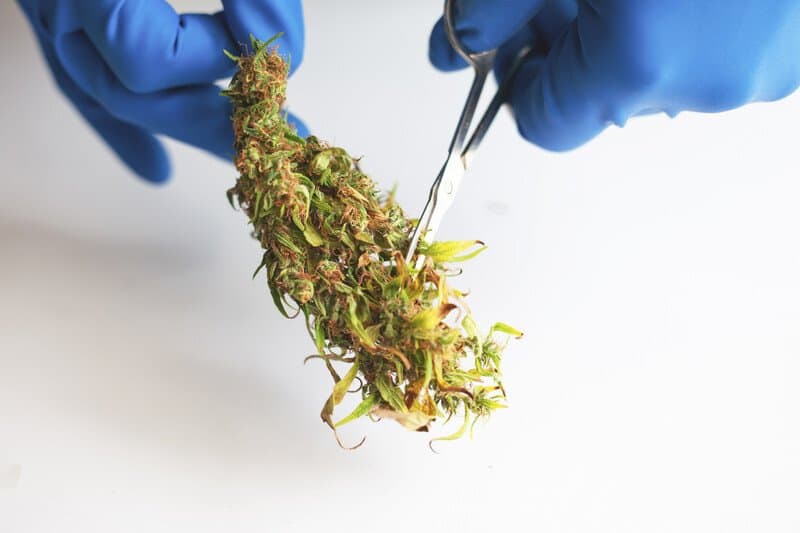
Trimming isn't all fun and games. You don't get to smoke weed on the job and just hang out with your friends. It is often hard work that can result in repetitive strain injury and other aches and pains throughout your body if you are not careful.
One reason that trimming can be so hard on the body is because workers are paid by the pound they trim. When someone takes a break or is not trimming, they are losing out on money. That is why many trimmers work 12-hour days or more to make more money.
The repetitive motion of squeezing a pair of scissors, excessive wrist movement, and hunching over the table can result in muscle cramps, numbness, or even ganglion cysts, which are lumps that develop along the tendons or joints in the wrists or hands.
In addition, you may be working in a drying or curing room where dehumidifiers are pulling out the moisture from the air in the room.As a result, you may end up with very dry skin and increased oil production that can trigger acne in all skin types all throughout harvest season.
While there are many challenges to working with cannabis buds, here are a few tips to keep in mind to help you stay healthy and pain-free while trimming cannabis:
- Stretch regularly: Every hour, you should take about 10 minutes to stretch your arms and hands. Giving your muscles this time to rest can help you avoid tendon strain. Every hour, stand up and stretch your arms and hands. Spread out your fingers and stretch your arms back.
- Soothe your muscles: In some cases, harvest managers will provide a cannabis topical for communal use. During your breaks, make sure to massage your sore areas such as hands, forearms, and neck to loosen them up.
- Care for your skin: Working in an extremely dry room with low humidity can result in dry skin and breakouts. To overcome this, practice good slef care for your skin. At night, you can use a combination of micellar water or and oil cleanser to remove the resin from your pores. Afterward, you can use a normal face wash to cleanse your skin. Once a week, use an exfoliator to do a deep clean and use a face toner before moisturizing. A hydrating face mist can be used regularly to overcome the dehydration in the trim room.
Trimming Cannabis Is A Great Way Into The Industry
Among the various cannabis jobs commonly required in today’s industry, trimming can be an attractive position—especially for those who want a hands-on career with the plant—and trimming is about as hands-on as it gets.
If you are at least 21 years of age and are able to pass a criminal background check, you have a good chance of breaking into the industry. Keep in mind, each state has different requirements for cannabis workers. Some may even require a cannabis worker permit.
Many trim rooms consist of a tight-knit group of people who enjoy friendly comradery and, hopefully, the same taste in music, as trimmers often work with speakers blasting.
Excellent cannabis trimmers are in demand among cannabis companies, so if you’re a detail-oriented person who doesn’t mind repetitive work and the occasional hand cramp, trimming might be the perfect cannabis job for you.
The work is consistent and rewarding, and there’s a steady demand for those who can do it well. Learn more about it, hone your skills, and you may find it’s your dream dispensary job that can lead to bigger and better things!
Advancement Opportunities
Starting off as a cannabis trimmer is an excellent way to break into the industry. As a trimmer, it is your responsibility to remove the leaves from the flower using pruning shears and weighing the bud. Over time, you can work your way up to become the lead trimmer.
Lead trimmers are also responsible for pruning leaves from the flower buds. In addition, they are in charge of quality control, organizing the product, and weighing the flower. The next step up the job ladder is the trimming production manager.
The trimming production manager is responsible for overseeing the production in the trim room. They are responsible for creating employee schedules, as well as developing and maintaining standard operating procedures.
As a lead or production manager, you must be the first one to get to work and set up the rooms. You must also distribute the raw flower between production rooms and ensure that all equipment is in working order. In addition, you may need to do some clerical work and track each strain during its stage of production.
What Are the Qualifications to Become a Cannabis Trimmer?
Before you go out looking for weed trimming jobs, consider the most common qualifications required to become a cannabis trimmer:
- Must be at least 21 years old
- Must pass a background check and have no disqualifying offenses (vary by state)
- High school diploma or GED (preferred)
- Previous experience trimming cannabis (preferred)
- Must be able to lift and carry up to 50 pounds
- Must be reliable and punctual
- Must obtain a cannabis worker's permit (if state regulations require it)
Do you Need Cannabis Certification to Become a Bud Trimmer?
Industry certification such as cannabis certification from CTU is not required to work in the cannabis industry. However, having industry certification from a renowned cannabis training institute can teach you how to find weed trimming jobs during any season. Understanding the anatomy of the flower bud and the basics of cannabis cultivation can set you apart from other applicants.
How to Gain Job Experience and Skills
As an entry-level position, the bud trimmer job does not require extensive experience trimming cannabis or working in cultivation or the cannabis industry. However, direct experience in the industry is preferred.
If you do not have any direct experience working with cannabis or trimming weed, don't worry. There are many different avenues outside of the cannabis industry where you can earn many of the hard, soft, and transferable skills needed to excel as a weed trimmer.
Basic skills you will need to become a trimmer include:
- Organization
- Cleanliness
- Attention to detail
- Ability to work with your hands
- Ability to perform repetitive hand movements
- Ability to weigh accurately
- Ability to sit, stand and remain focused for long periods of time
If you want to have the best chance of getting hired as a marijuana trimmer, working on a farm, greenhouse, or any other environment that requires the skills listed above is a good start. In addition, understanding the structure of a cannabis flower bud can help.
Where to Find Work
Back in the day, you would find work trimming cannabis through word of mouth or making the journey toward in the fall to hubs that grow marijuana. Nowadays, finding a cannabis trimming job is as easy as searching “weed trimming jobs near me” or “bud trimmer jobs near me.”
- Online job boards: Popular job boards such as Indeed, Monster, Glassdoor, Simply Hired, and Craigslist are great resources for finding work in cannabis cultivation. Just make sure to check daily or set an alert to get your resume in early.
- Cannabis-specific job boards: With the rise of legalization, there has been an increase in job boards dedicated to the cannabis industry.
- Recruiting agencies: Recruiting and placement agencies such as Viridian Staffing, Ms. Mary Staffing, and The Marijuana Job Board can line up job seekers with compatible weed jobs in cultivation, retail, or manufacturing segments.
- Social media: Cannabis companies often post their job opportunities through social media networks such as Instagram, Facebook, Twitter, and Snapchat. If they're not currently hiring, you can directly message them and engage with their posts.
- Email: Send an email to the cannabis cultivation company you want to apply to. With a snappy subject line, you can reach out and let them know you're looking for a job. Make sure to include your skills and experience along with your resume in the brief message.
- Networking: Attend local industry events to get to know local business owners who may be hiring. If the company is vertically integrated, you can network at their dispensary and inquire if they have marijuana industry jobs available in their cultivation facility.
How to Apply for Weed Trimming Jobs
Once you narrow down the company you want to apply to or the job ad you want to respond to, it's time to get your trimming application ready. Knowing how to create a solid resume and cover letter can land you the interview where you can impress the interviewer in person.
Resume
A resume showcases your best attributes, work experience, and skills that can help you succeed as a bud trimmer.
“
There are over 300,000 jobs in the cannabis industry. CTU trained me for one of them!

Makes $24.50 @ THC +
Here are a few tips to make your resume stand out:
- Keep your resume under one page
- Proofread your resume for grammatical or spelling errors
- Save your resume as a Word document and PDF since each company may have a different preference
- Add your name and contact information at the top of the page
For more information, check out our blog post on how to create a resume for the cannabis industry.
Cover Letter
A cover letter should be brief and cover your relevant work history and skills that will make you the best for the position. Make sure to scan the job ad and use language directly from it to show you have the necessary skills.
A cover letter should include a heading with your contact information and a body where you describe why you are the best for the trimming job. Most people will not send in a cover letter, so if you do, you will be one step ahead of the competition.
Check out our blog post on how to create a cover letter for the cannabis industry for more information.
Interview
If your cover letter and resume impressed the hiring manager, you will be called in for an interview. Here are a few tips to consider to get the job:
- Arrive at least 10 minutes early
- While you will be working in a cultivation facility, dress nicer than the position requires during the interview
- Prepare a few questions to ask the employer
- Have ready a few concrete examples of your skills that will help you while trimming
Bud Trimmer Certification
To be better prepared and make yourself stand apart from other applicants it is recommended and preferred by cannabis employers that candidates get educated and trained online.
Cannabis Training University was the first online cannabis college back in 2009 and has certified more bud trimmers than all cannabis schools combined. Learn all facets of the cannabis industry at CTU and earn your cannabis certifications that are known and accepted by cannabis employers around the world.
If you are interested in a cannabis trimmer job first get your cannabis education training online at the, Cannabis Training University.
Get Cannabis Training at CTU
Cannabis Training University (CTU( provides students from around the world with a comprehensive cannabis training program on the fundamentals of the industry, from the plant’s medicinal value to getting hired in a wide range of entry-level and management positions.
Whether you want to work as an entry-level cannabis trimmer or budtender or a dispensary manager or head grower, CTU can prepare you to work in any segment of the industry.
CTU’s complete cannabis education teaches you how to grow weed at home and land a job and career in this fast-growing industry.
Sign up for CTU’s online marijuana classes to learn more about this incredible plant and get your career started with a solid educational foundation to propel you toward success.
Marijuana Trimmer Job FAQ's
What does a bud trimmer do?
A bud trimmer carefully cuts off the extra leaves that grow on cannabis flowers after they are picked. These leaves aren't as strong and can lower the quality of the product as a whole. The goal is to keep the valuable buds wrapped in trichomes that are used for smoking and either throw away or process the less potent leaves for other uses, like making concentrates or edibles.
Wet trimming vs. dry trimming. What's the difference?
With wet trimming the buds are cut right after they are picked, while they are still fresh and wet. Many people think that cutting while wet is faster and can make the end product look better. But it might speed up the drying process, which some say could change the smoke's taste and sweetness.
When dry trimming, the buds are hung to dry for 7–14 days before the clipping process starts. People say that dry trimming lets the drying process happen more slowly and more carefully, which might help keep more of the terpenes and cannabinoids, which can make the smell and taste of the weed better.
What are the pros and cons of machine trimming?
Pros: Machine trimming can handle a lot of products much more quickly than hand trimming, which saves time and money on work. It works especially well for big projects where productivity is very important.
Cons: Machines might not be as careful or accurate as cutting by hand, which could damage the buds and knock off valuable trichomes. This could make the end product look worse and could change its taste and strength.

Jeff Zorn
Jeff Zorn, a collegiate basketball player, discovered the transformative power of medical cannabis after a significant injury. He founded Cannabis Training University (CTU), a groundbreaking institution dedicated to disseminating comprehensive information about the cannabis industry. With a team of skilled educators and faculty members, CTU has reached thousands of students worldwide. As an esteemed cannabis business expert, Jeff regularly contributes thought-provoking articles online, providing invaluable guidance to aspiring entrepreneurs. CTU has grown from a single student in 2009 to a global phenomenon with over 80,000 students.


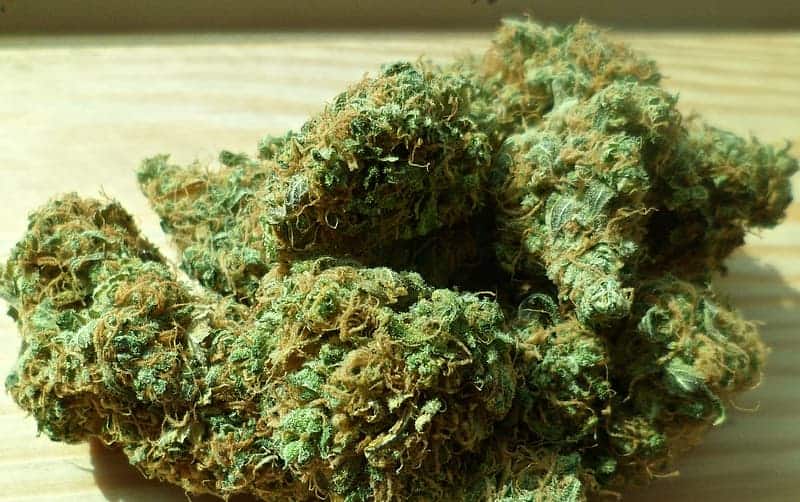
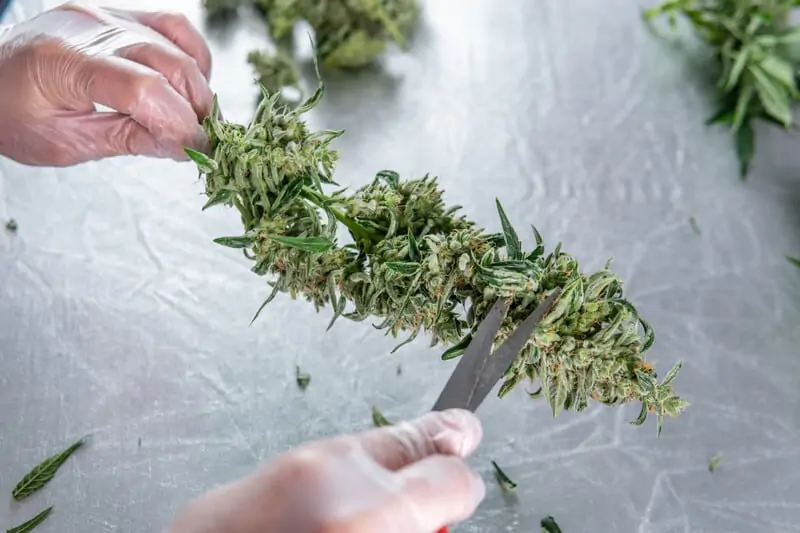



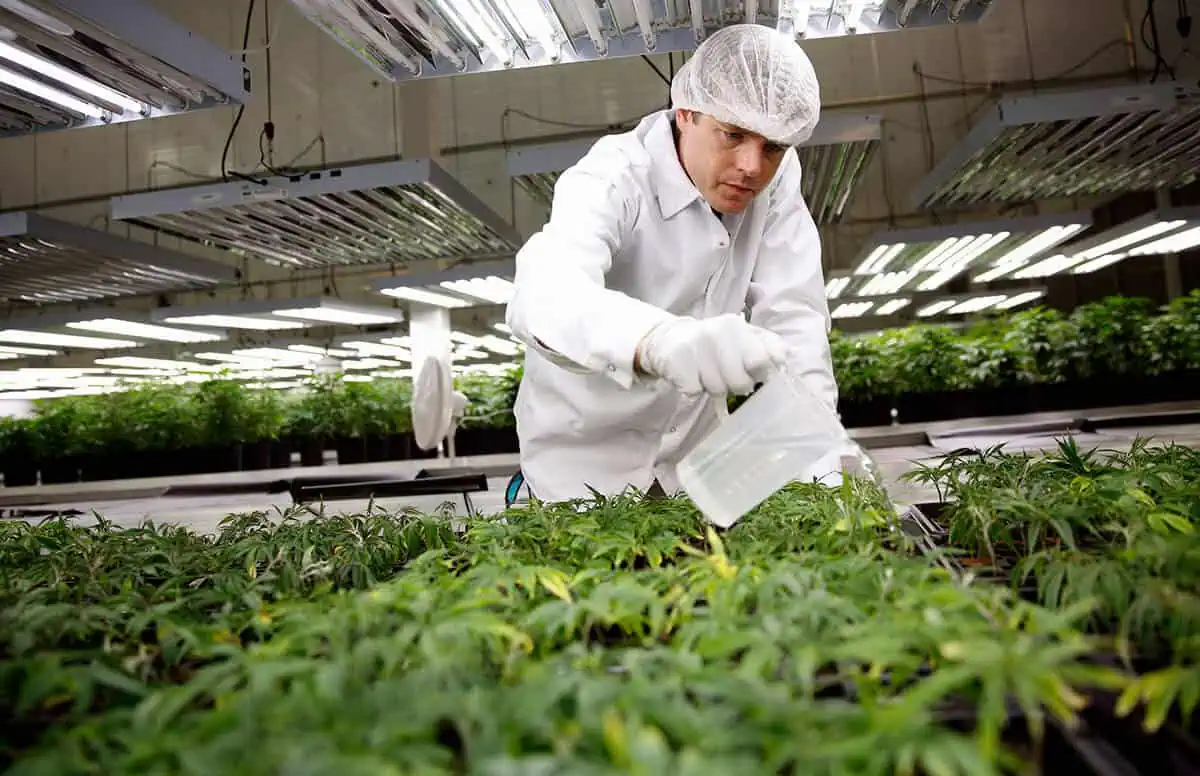
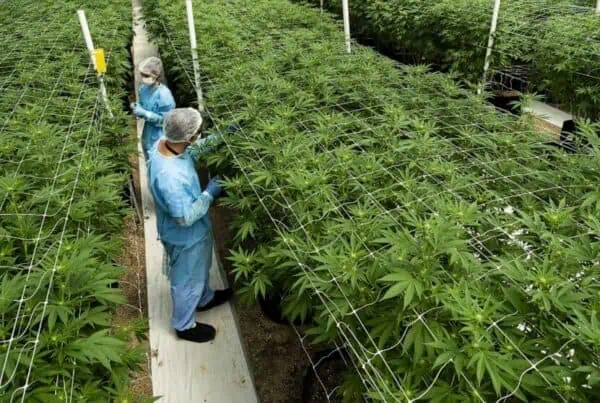
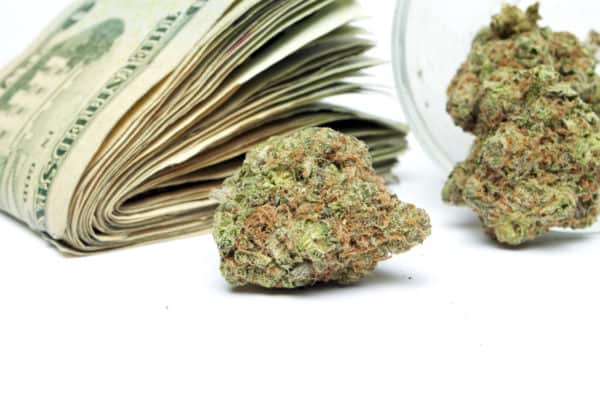
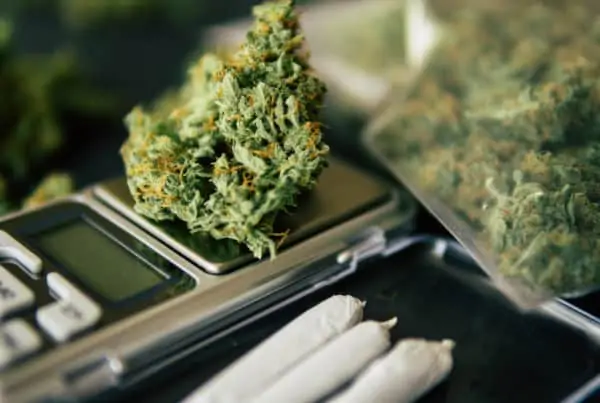


 Jeff was involved in an accident where he endured a traumatic brain injury. He had a week-long stay in ICU where brain surgeons
Jeff was involved in an accident where he endured a traumatic brain injury. He had a week-long stay in ICU where brain surgeons  100% risk free money back guarantee within 48 hours after purchase if student has not completed any of the courses or exams.
100% risk free money back guarantee within 48 hours after purchase if student has not completed any of the courses or exams.